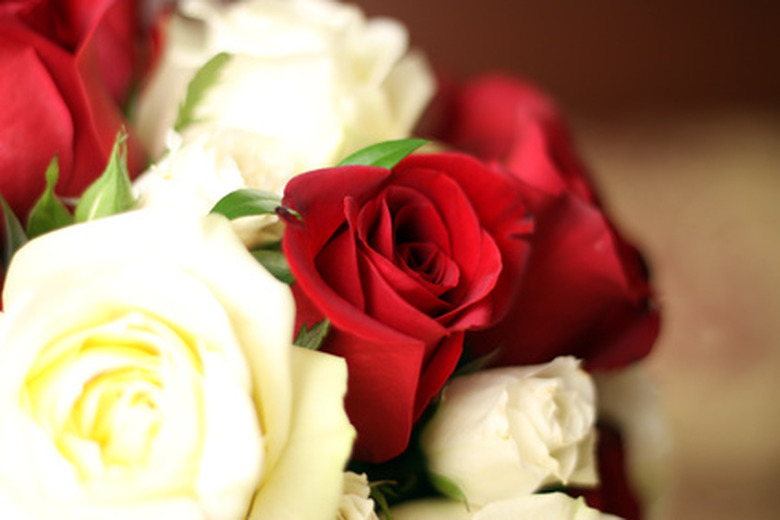What Is The Pavé Style Of Flowers?
Those not involved in the floral business may not realize that in the world of flower arranging, there are different styles of arrangements and, of course, many different terms professionals use to describe floral arrangements. Many of the named floral arrangement styles refer to the shape of the arrangement, with horizontal, vertical, oval and triangle arrangements being a few examples of this. While a pavé floral arrangement can come in many shapes, its name describes the proximity of the flowers to one another.
Definition
If you're familiar with the term pavé in jewelry, then you are on your way to understanding what the pavé style of flower arranging is. Pavé is the French word for "paved." Imagine a walkway paved in cobblestones. The stones are fairly small, but set so closely to one another that they form a solid surface. In jewelry, pavé refers to gems that are set very close to one another so that there is very little metal showing, as if the piece has been "paved" with gems. In floral arranging, a pavé arrangement is one where the designer trims off leaves, cuts the stems fairly short and places the flower heads very closely together.
Uses for Pavé Arrangements
Arranging flowers in the pavé style gives the finished design a lush, luxurious look. Instead of being light and airy with long stems, leaves, filler plants and few flowers, the pave style is dense, perhaps even crowded with flowers. Because pavé's overall look is clean, tailored, luxurious and sophisticated, it lends itself well to elegant occasions. Pavé arrangements work quite well for bridal bouquets, small tabletop arrangements, topiary or any arrangement where a mounded shape is called for.
Flowers Used in Pavé Arrangements
Flowers with dense, compact heads lend themselves well to the pavé style. Rosebuds, peonies, hydrangeas, ranunculus, carnations and viburnum work well. Flowers growing on tall stalks, such as snapdragon and gladiolus, and flowers with pronounced, spiky petals, such as tiger lilies, do not work well, as a finished pavé arrangement should have a fairly smooth, even surface.
Make Your Own Pavé Arrangement
To create a small pavé arrangement of your own, trim the leaves from 25 to 30 rosebuds or carnations. Fill a highball glass or some other small, fairly shallow vessel about halfway with water. Create a ring of flowers around the rim of the glass, trimming the stems so that the flowers hang just over the rim. Position the flowers so that they are touching and very close together. Repeat with more rings of flowers, working from the outside toward the middle, one ring at a time. Trim the stems slightly longer with each ring, until the glass is full and the flowers form a mound.
